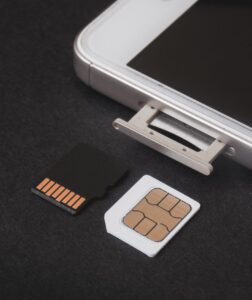Introduction
The Internet of Things (IoT) has rapidly transformed the way we interact with technology and the world around us. In the IoT era, everyday objects, devices, and systems are connected to the internet, allowing them to collect and exchange data, make intelligent decisions, and improve efficiency and convenience in our lives. This article delves into the world of IoT, explaining its fundamental concepts, exploring its far-reaching implications for everyday technology, and examining the challenges and opportunities it presents.

-
Understanding the Internet of Things (IoT)
1.1 Defining IoT
The Internet of Things refers to a network of interconnected physical objects, devices, and systems that communicate with each other and with central servers through the internet. These “things” can range from simple sensors and smart appliances to complex industrial machinery and autonomous vehicles. IoT enables these devices to collect, process, and share data, often in real-time, without human intervention.

1.2 Key Components of IoT
To comprehend IoT fully, it’s essential to grasp its core components:
- Devices and Sensors: These are the physical “things” in IoT, equipped with sensors, processors, and communication capabilities. They can be anything from temperature sensors in a smart thermostat to GPS modules in a vehicle.
- Connectivity: IoT relies on various communication technologies like Wi-Fi, cellular networks, Bluetooth, and Low-Power Wide Area Networks (LPWANs) to connect devices to the internet.
- Data Processing and Analytics: Data collected by IoT devices are sent to central servers or the cloud for processing. Advanced analytics and machine learning algorithms can extract valuable insights from this data.
- User Interfaces: IoT applications often feature user interfaces, such as mobile apps or web dashboards, that allow users to monitor and control connected devices remotely.

- Automation and Control Logic: Many IoT systems use automation and control logic to make decisions and trigger actions based on data inputs. For instance, a smart thermostat can adjust the temperature based on occupancy and weather data.

1.3 The Growth of IoT
The growth of IoT has been explosive, driven by advances in technology, falling hardware costs, and the increasing demand for connected solutions. According to Gartner, by 2021, the number of IoT devices reached over 11 billion, and this number is expected to surpass 25 billion by 2030. IoT applications span various domains, including smart homes, healthcare, agriculture, transportation, and industrial automation.
-
Implications for Everyday Technology
2.1 Smart Homes and IoT
One of the most visible impacts of IoT is in the realm of smart homes. IoT-enabled devices like thermostats, lights, security cameras, and voice assistants have become commonplace, enhancing convenience and energy efficiency. Here are some key implications of IoT for smart homes:

- Home Automation: IoT allows homeowners to automate tasks like adjusting lighting and temperature, locking doors, and even brewing coffee. This leads to energy savings, improved security, and enhanced comfort.
- Energy Efficiency: Smart thermostats, such as Nest, learn user preferences and optimize heating and cooling, resulting in reduced energy consumption and lower utility bills.
- Security: IoT-based security systems offer real-time monitoring and remote control, giving homeowners peace of mind and enabling rapid response to security threats.
2.2 Healthcare and Wearable Devices
IoT has revolutionized the healthcare industry, leading to the development of wearable devices that monitor vital signs and collect health data. The implications for healthcare are profound:

- Remote Patient Monitoring: Patients with chronic illnesses can be monitored remotely, allowing doctors to intervene early if health metrics deviate from normal ranges.
- Fitness and Wellness: Wearable fitness trackers like Fitbit and smartwatches provide users with real-time data on physical activity, heart rate, and sleep patterns, empowering individuals to make healthier lifestyle choices.
- Drug Adherence: Smart pill dispensers remind patients to take medication, improving adherence to treatment regimens.
2.3 Transportation and Autonomous Vehicles
IoT is driving innovation in the transportation sector, particularly in the development of autonomous vehicles and intelligent transportation systems:

- Connected Vehicles: IoT enables vehicles to communicate with each other (Vehicle-to-Vehicle or V2V) and with roadside infrastructure (Vehicle-to-Infrastructure or V2I), improving road safety and traffic management.
- Autonomous Vehicles: Self-driving cars rely heavily on IoT sensors and data to navigate and make decisions, with the potential to reduce accidents and traffic congestion.
- Ride-Sharing and Mobility Services: IoT platforms power ride-sharing and mobility-as-a-service (MaaS) applications, enhancing transportation efficiency in urban areas.
2.4 Agriculture and Precision Farming
In agriculture, IoT has given rise to precision farming, which optimizes crop management and resource utilization:
- Remote Monitoring: IoT sensors can monitor soil conditions, weather, and crop health, allowing farmers to make data-driven decisions about irrigation, fertilization, and pest control.
- Automation: Farm machinery equipped with IoT technology can perform tasks like planting, harvesting, and spraying with minimal human intervention, increasing productivity.
- Resource Conservation: Precision farming minimizes water and chemical usage, reducing the environmental impact of agriculture.

2.5 Industrial IoT (IIoT)
The Industrial Internet of Things (IIoT) has transformed manufacturing and industry by enhancing efficiency, reducing downtime, and enabling predictive maintenance:
- Predictive Maintenance: Sensors on industrial equipment can monitor the condition of machinery and predict when maintenance is needed, preventing costly breakdowns.
- Supply Chain Optimization: IoT improves supply chain visibility by tracking inventory, shipments, and logistics in real-time.
- Quality Control: IoT sensors can monitor product quality throughout the manufacturing process, ensuring consistency and reducing defects.
2.6 Retail and Customer Experience
Retailers leverage IoT to enhance customer experiences and streamline operations:
- Inventory Management: RFID tags and IoT sensors help retailers monitor inventory levels in real-time, reducing stockouts and overstock situations.
- Personalized Shopping: IoT-powered beacons and mobile apps provide personalized offers and recommendations to shoppers based on their location and preferences.
- Checkout Automation: Automated checkout solutions, like Amazon Go stores, use IoT technology to allow customers to grab items and walk out without waiting in line.

2.7 Environmental Monitoring and Conservation
IoT plays a crucial role in environmental monitoring and conservation efforts:
- Air and Water Quality: Sensors deployed in urban areas can monitor air quality for pollutants, enabling authorities to take timely action.
- Wildlife Conservation: IoT is used to track the movement and behavior of endangered species, aiding conservation efforts.
- Energy Conservation: Smart grids and IoT-enabled energy management systems help reduce energy consumption and carbon emissions.
III. Challenges and Considerations
3.1 Privacy and Security
As IoT devices collect and transmit vast amounts of data, privacy and security concerns have become paramount. Unauthorized access, data breaches, and the potential for surveillance raise ethical and legal questions that must be addressed.
3.2 Interoperability
IoT devices come from various manufacturers and may use different communication protocols, making interoperability a challenge. Standardization efforts are ongoing to ensure seamless communication between devices.

3.3 Data Management
The volume of data generated by IoT devices can be overwhelming. Efficient data storage, processing, and analysis are critical to extract meaningful insights from IoT-generated data.
3.4 Reliability and Downtime
IoT devices must operate reliably, especially in critical applications like healthcare and transportation. Downtime or system failures can have severe consequences.
3.5 Sustainability
The proliferation of IoT devices raises concerns about e-waste and the environmental impact of manufacturing and disposing of these devices.
-
Future Trends and Possibilities
The IoT landscape continues to evolve rapidly, with several emerging trends and possibilities:
4.1 5G Connectivity
The rollout of 5G networks promises to provide faster, more reliable connectivity, enabling a new generation of IoT applications that demand low latency and high bandwidth.
4.2 Edge Computing
Edge computing, where data is processed closer to the source (IoT device), reduces latency and enables real-time decision-making. It’s poised to become a fundamental component of IoT architecture.

4.3 AI and Machine Learning Integration
IoT data combined with AI and machine learning capabilities can lead to more intelligent and autonomous IoT systems, capable of adapting and learning from their environment.
4.4 Blockchain for Security
Blockchain technology can enhance the security and trustworthiness of IoT ecosystems, ensuring the integrity and authenticity of data.
4.5 IoT in Healthcare
IoT will continue to revolutionize healthcare with applications like telemedicine, remote patient monitoring, and AI-powered diagnostics.
4.6 Smart Cities
IoT will play a central role in the development of smart cities, optimizing traffic management, energy usage, and public services.
Conclusion
The Internet of Things has ushered in an era of unprecedented connectivity and data-driven decision-making. From smart homes to healthcare, transportation to agriculture, IoT is reshaping our everyday technology and transforming industries. While it brings forth numerous opportunities for innovation and efficiency, it also poses challenges related to security, privacy, and sustainability.
As IoT continues to evolve, it is imperative that stakeholders, including governments, industries, and consumers, collaborate to address these challenges and maximize the benefits of this transformative technology. The future holds the promise of even more advanced and interconnected IoT ecosystems, with the potential to revolutionize how we live, work, and interact with the world around us.

